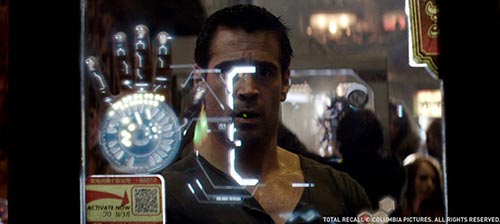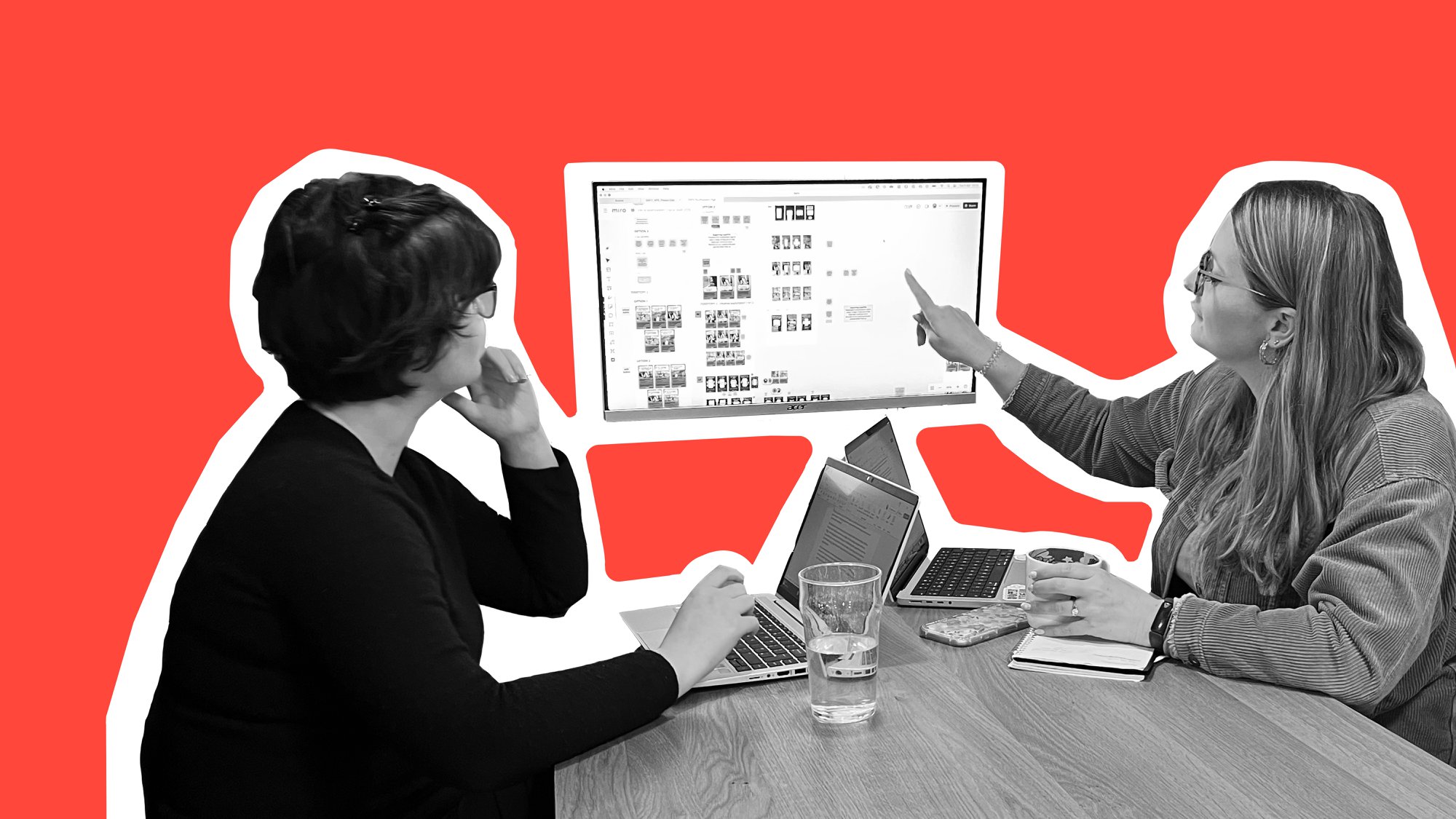Exploring User Interface design in the movies. Total Recall or total recoil?

User Interface (UI) design has come a long way since the days of Space 1999 and the original Star Trek series.
When I was very young I remember watching sci-fi shows with my family and I was fascinated by all the fantasy, gadgets and displays that were created to illustrate how technology might be in the future.
Since then technology has moved on. Designers are designing for the now, but being influenced by the future to create amazing UIs in movies that, as design professionals, we’ve always dreamed of making.
UI design has always inspired me to keep pushing myself to design with the future in mind, while still considering the practicalities of who would be using it now. Sometimes UI design in the movies can also predict future technologies being created in the real world, even though the interfaces in the movies can look very intricate and complex, in the real world they seem to be getting simpler and more intuitive.
Let’s take a look at six of the best examples of UI design in the movies to draw this influence:
Minority Report (2002) shifted the focus of UI design. The curved, see-through, gesture-controlled glass screens got people thinking much more about our relationship with technology and interaction design – bearing in mind this was back in 2002. By 2010, Microsoft released Kinect for the Xbox with gesture-based interactions and voice recognition software.
In Iron Man (2008), you see Tony Stark (played by Robert Downey Jr) use amazing holographic UIs, glass touchscreen monitors and HUDs (Heads-Up Displays) to show how he created the Iron Man suit. His workshop in the boot-up sequence was also extremely impressive – he clapped his hands and every car, suit and room was scanned and had its own 3D mapping. This year the Moment Factory created a Super Bowl Virtual Theatre, a multimedia show that projected 3D and 2D imagery on the outdoor façade of Macy’s in New York.

 Avengers Assemble (2012) had large glass touchscreen displays to fly the Helicarrier ship they were on. In 2011 Samsung started to mass-produce transparent LCD screens with a range of practical uses. LG has also created a 4.3mm thick OLED Smart 3D curved TV with transparent speakers which you can now buy in stores.
Avengers Assemble (2012) had large glass touchscreen displays to fly the Helicarrier ship they were on. In 2011 Samsung started to mass-produce transparent LCD screens with a range of practical uses. LG has also created a 4.3mm thick OLED Smart 3D curved TV with transparent speakers which you can now buy in stores.

 In Avatar (2009) you can see Bio Lab and Holotable and the technicians studying 3D holographic models and diagrams. This is an excellent way of displaying what they are viewing. The way they’re interacting with it all seems effortless. They also had glass touchscreens in which they could drag information from one to another and then to a portable device. In 2008 – a year before Avatar came out, Microsoft and Samsung created Pixelsense (formerly known as Surface), which is a multi-touch, 360 degree PC hardware that could be mounted on legs or on a wall where a user can interact with Windows based software. It is a far cry from Avatar’s Holotable, but you can see the potential of this tech in the future.
In Avatar (2009) you can see Bio Lab and Holotable and the technicians studying 3D holographic models and diagrams. This is an excellent way of displaying what they are viewing. The way they’re interacting with it all seems effortless. They also had glass touchscreens in which they could drag information from one to another and then to a portable device. In 2008 – a year before Avatar came out, Microsoft and Samsung created Pixelsense (formerly known as Surface), which is a multi-touch, 360 degree PC hardware that could be mounted on legs or on a wall where a user can interact with Windows based software. It is a far cry from Avatar’s Holotable, but you can see the potential of this tech in the future.

 Total Recall (2012) had a number of interesting touchscreen technologies as well as some very interesting concepts. I loved the original by Paul Verhoeven and I know the remake didn’t have the same impact in my opinion. However, there is lots of excellent UI design, from holographic displays, HUD’s, vehicular UI’s, synthetic face maps and scanners. There are so many things that stood out for me in this movie. One was the telephone, which was imbedded into Quaid’s (played by Colin Farrell) hand. The hand connecting to the glass surface makes the connection to the recipient. This was beautifully executed. The circuit board design aesthetic gave the illusion of the inner workings of the device they were portraying.
Total Recall (2012) had a number of interesting touchscreen technologies as well as some very interesting concepts. I loved the original by Paul Verhoeven and I know the remake didn’t have the same impact in my opinion. However, there is lots of excellent UI design, from holographic displays, HUD’s, vehicular UI’s, synthetic face maps and scanners. There are so many things that stood out for me in this movie. One was the telephone, which was imbedded into Quaid’s (played by Colin Farrell) hand. The hand connecting to the glass surface makes the connection to the recipient. This was beautifully executed. The circuit board design aesthetic gave the illusion of the inner workings of the device they were portraying.
Prometheus (2012) also had some really beautifully designed UI’s by displaying holographic 3D projections of the solar system that can be interacted with in a range of ways – the projections of the aliens moving around a space to tell a story without words. The Holotable control screen as well as the cryo-chamber pods where the crew were first sleeping in was also beautifully executed. The chamber had a UI for the person inside if there was a problem or an emergency, as well as another for someone keeping an eye on them. The majority of the UI’s were on transparent glass screens or surfaces depending on the application.

The detail of these UI’s goes to the macro-level in its organisation. From grid structures, font families, numerous sketches and object layouts, these designers create interfaces that are believable and look very cool at the same time. They have to get under the skin of the film to portray what the UI’s and HUDs should be and feel like in that moment in time. These projects take months to complete and it’s the passion and the drive of the creative teams to really keep the ideas and the momentum going.
One film that might disrupt the way we see, feel and react to UI design is Her (2013). It’s a new film directed by Spike Jonze where a troubled writer, Theo Twombly (Played by Joaquin Phoenix) has a romantic relationship with an operating system (OS). Her name is Samantha (played by Scarlett Johansson). There are no keyboards for their computers. They are voice-controlled. He can connect to his computer via an earpiece, wherever he is. His monitor has a wooden frame, like a picture and is quite large, which juxtaposes the thinner displays we want in the real world. His skeuomorphic letter-writing application still holds on to the printed page. His phone is like an old pocket book. His computer game is a holographic projection in his lounge. There’s no controller, its gesture-based. The technology doesn’t look futuristic as in Total Recall, its simple and understated. The use of vintage objects is also nicely executed in this film.

It’s more about his relationship with his artificial intelligent (AI) OS and how she reacts to the individual needs of him. She is a technological mate. Trying to get computers to know how you feel, then to cheer you up is quite a way away, but the idea of making technology more human is alive and well. By taking this view we can take ourselves out of current restrictions and start to explore brand new paradigms of interaction design, thus influencing others around us.

Where is UI design going to go in the future? In my opinion, the future is bright.
From gesture-based to touch; from voice-control to 3D mapping, the possibilities keep coming. I believe in looking to the future and fantasy to influence the world we currently live in. But it’s also a case of looking at real-world technology and moving it a number of years forward; a case of understanding interfaces and interactions, then simplifying them.
In twenty years we’ve come so far in terms of pushing the boundaries of technology and design in both movies and in the real world. The more interesting and engaging movies become, the more UI design will continue to be a fascinating look into the future.







